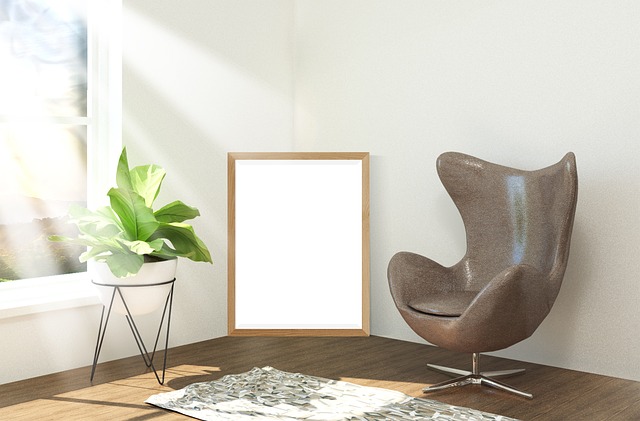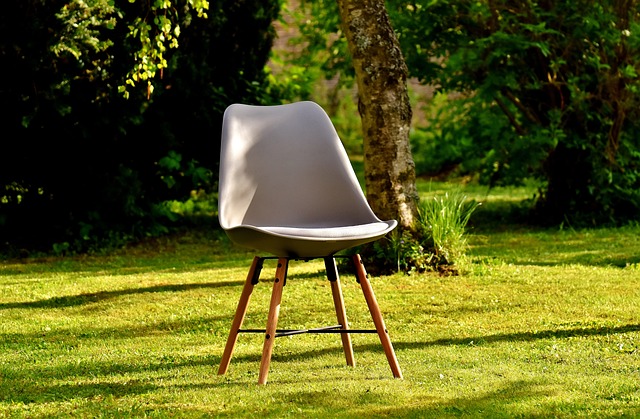Choosing the Perfect Chair for Prolonged Sitting
16 min read
When it comes to optimizing comfort and maintaining good posture during prolonged sitting, selecting the perfect chair is paramount. The right chair can significantly enhance productivity and reduce the risk of musculoskeletal disorders, ensuring a healthier and more efficient work environment. In this comprehensive guide, we will delve into the essential factors to consider when choosing the ideal chair for prolonged sitting.
- Ergonomics: The cornerstone of an excellent chair for prolonged sitting lies in its ergonomic design. Ergonomics focuses on creating products that fit the user’s needs, minimizing discomfort and maximizing efficiency. Look for chairs that feature adjustable components, such as seat height, armrests, backrest, and lumbar support. These adjustable features allow users to customize the chair according to their unique body dimensions, promoting a neutral sitting posture and reducing the strain on the musculoskeletal system.
- Lumbar Support: One crucial element to prioritize in a chair for prolonged sitting is adequate lumbar support. The lumbar region, located in the lower back, is particularly vulnerable to strain and discomfort when sitting for extended periods. An ideal chair should have an adjustable lumbar support feature that can be positioned to fit the natural curvature of the spine. This promotes proper alignment, reduces pressure on the lumbar discs, and helps prevent the onset of lower back pain.
- Seat Depth and Width: Another vital consideration is the seat dimensions. A chair with adjustable seat depth allows users to customize the distance between the seat edge and the backrest. This feature ensures that individuals with varying leg lengths can sit with their back fully supported, without experiencing pressure on the thighs. Additionally, the width of the seat should provide ample room for users to sit comfortably without feeling constrained, allowing for unrestricted movement and better circulation.
- Material and Cushioning: The choice of materials and cushioning significantly impacts the overall comfort and durability of a chair. Opt for chairs with high-quality, breathable upholstery that promotes airflow and prevents excessive heat buildup. Additionally, cushioning should strike a balance between providing adequate support and cushioning pressure points, ensuring a comfortable sitting experience over prolonged periods. Memory foam or gel-infused cushions are often favored for their ability to conform to the user’s body contours while maintaining resilience.
- Armrests and Arm Support: Armrests play a crucial role in reducing strain on the upper body during prolonged sitting. Adjustable armrests allow users to position them at the optimal height and width, supporting the forearms and alleviating stress on the shoulders and neck. Look for chairs with padded armrests that offer a soft and comfortable surface for resting the arms, promoting relaxation and reducing tension in the upper body.
- Mobility and Stability: Consider the mobility and stability of the chair before making a final decision. Chairs equipped with casters or wheels provide ease of movement and flexibility, allowing users to reach different areas of their workspace without straining or exerting unnecessary effort. However, ensure that the wheels can be locked to provide stability when needed. Additionally, a five-point base with sturdy construction enhances stability and minimizes the risk of tipping over, ensuring safety during prolonged sitting sessions.
- Additional Features: Some chairs offer additional features that can enhance the sitting experience. These may include adjustable headrests for neck support, reclining mechanisms for shifting posture, and swivel capabilities for increased mobility. Consider these features based on individual preferences and requirements.
By taking into account the factors mentioned above, you can make an informed decision when choosing the perfect chair for prolonged sitting. Remember, investing in a high-quality ergonomic chair not only prioritizes your well-being and comfort but also boosts productivity and reduces the likelihood of developing musculoskeletal issues. Prioritize your health and optimize your work environment by selecting a chair that supports you throughout those long Prioritize your health and optimize your work environment by selecting a chair that supports you throughout those long hours of sitting, ultimately contributing to a more productive and comfortable work experience. With careful consideration of ergonomic design, lumbar support, seat dimensions, cushioning, armrests, mobility, stability, and any additional features, you can find the perfect chair that caters to your specific needs and ensures a healthier and more enjoyable sitting experience. Don’t compromise on your well-being and invest in a chair that promotes good posture and long-term comfort, allowing you to focus on your work without the distractions of discomfort or pain.
What are the key factors to consider when selecting a chair for long hours of sitting?
When it comes to selecting a chair for long hours of sitting, several crucial factors should be taken into consideration to ensure optimal comfort and support. With the increasing prevalence of sedentary lifestyles, ergonomic chairs have gained significant importance in promoting good posture and reducing the risk of musculoskeletal disorders. In this article, we will explore the key factors that should be considered when choosing a chair for prolonged sitting.
- Ergonomics: Ergonomics plays a vital role in determining the suitability of a chair for long hours of sitting. Look for a chair that is designed to support the natural curves of the spine, particularly the lumbar region. The chair should offer adjustable features such as seat height, backrest angle, and armrest height to accommodate various body types and sitting preferences. Ergonomic chairs promote proper alignment of the body, reducing strain on the back, neck, and shoulders.
- Seat Comfort: Comfort is crucial for prolonged sitting sessions. Look for a chair with a well-padded seat cushion that provides adequate support and pressure distribution. The seat should be wide and deep enough to accommodate different body sizes, allowing for unrestricted movement. Additionally, consider the material used for the seat upholstery, as it should be breathable and durable to withstand long-term use.
- Lumbar Support: Proper lumbar support is essential to maintain the natural curve of the lower back, preventing slouching and reducing the risk of lower back pain. A chair with adjustable lumbar support allows you to customize the level of support according to your preference and individual needs. It ensures that your lower back is well-supported, promoting a healthy sitting posture.
- Adjustability: The ability to adjust various aspects of the chair is vital for accommodating individual preferences and promoting comfort. Look for a chair that offers adjustable features such as seat height, backrest angle, armrest height, and depth. These adjustments allow you to customize the chair to fit your body perfectly, reducing strain and fatigue during long sitting sessions.
- Breathability: Sitting for extended periods can lead to heat and moisture buildup, causing discomfort and potentially skin-related issues. Consider a chair with breathable materials, such as mesh or perforated fabrics, which allow air circulation and heat dissipation. This helps to keep you cool and comfortable throughout prolonged sitting sessions.
- Durability: A chair for long hours of sitting should be built to withstand regular use over an extended period. Look for chairs made from high-quality materials, such as sturdy frames and durable upholstery. Chairs with robust construction are more likely to provide long-lasting support and maintain their ergonomic features for years to come.
- Mobility and Stability: If you need to move around frequently or perform tasks that require mobility, consider a chair with wheels or casters. This allows for easy movement and reduces the strain of reaching for objects within your workspace. However, ensure that the chair provides stability and doesn’t compromise safety when sitting or leaning.

How to find ergonomic chairs designed for extended sitting comfort?
When it comes to finding ergonomic chairs that are specifically designed for extended sitting comfort, there are several key factors to consider. Prolonged sitting can lead to various health issues, including back pain, neck strain, and poor posture. Therefore, selecting the perfect chair that provides adequate support and promotes proper body alignment is crucial for maintaining a comfortable and productive workspace. In this guide, we will explore the essential features and considerations to help you find the ideal ergonomic chair for extended sitting.
- Adjustable Seat Height: Look for chairs that offer adjustable seat height functionality. This feature allows you to customize the chair’s height according to your body proportions and the height of your desk. Proper seat height ensures that your feet are flat on the floor, thighs are parallel to the ground, and knees are at a 90-degree angle, promoting proper blood circulation and reducing pressure on your lower back.
- Lumbar Support: Opt for chairs that provide adequate lumbar support. The lumbar region, or lower back, is particularly susceptible to strain when sitting for extended periods. An ergonomic chair with built-in lumbar support helps maintain the natural curve of your spine, alleviating stress on the lower back and promoting proper posture.
- Adjustable Backrest: A chair with an adjustable backrest allows you to modify the angle and position of the backrest to fit your comfort preferences. Look for chairs that offer both height and tilt adjustment options. The backrest should provide firm support to the entire back, including the upper and lower back regions, promoting a neutral spine position.
- Seat Depth and Width: Consider chairs that offer adjustable seat depth and width. An ideal seat depth allows you to sit comfortably with your back against the backrest while leaving a few inches of space between the edge of the seat and the back of your knees. Additionally, a wider seat accommodates different body types and provides ample room for movement.
- Armrests: Look for chairs with adjustable armrests. Armrests that are too high or too low can lead to shoulder and neck strain. Ideally, adjustable armrests should allow your arms to rest comfortably at a 90-degree angle, with your shoulders relaxed and your forearms parallel to the ground.
- Seat Cushioning: Consider chairs with high-quality seat cushioning that provides sufficient padding and support. Look for chairs with foam or memory foam cushions that offer a balance between comfort and firmness. The cushion should distribute your body weight evenly, reducing pressure points and enhancing sitting comfort.
- Breathable Materials: Opt for chairs made from breathable materials that allow air circulation, preventing heat and moisture buildup. Mesh fabrics are often used in ergonomic chairs as they provide ventilation, keeping you cool and comfortable during prolonged sitting sessions.
- Swivel and Casters: A chair with a swivel base and smooth-rolling casters allows for easy movement and access to different areas of your workspace without straining your body. The ability to rotate and glide smoothly reduces the need for excessive twisting and reaching, enhancing convenience and reducing the risk of musculoskeletal discomfort.
- Additional Features: Some ergonomic chairs offer additional features such as adjustable headrests, seat tilting mechanisms, and built-in lumbar massage functions. While not essential, these features can provide added comfort and customization options based on your personal preferences.

What are the best chair options for office workers or individuals with desk jobs?
When it comes to office workers or individuals with desk jobs, selecting the right chair is crucial for maintaining comfort, productivity, and overall well-being. Spending prolonged hours sitting can lead to various health issues, including musculoskeletal disorders, poor posture, and decreased concentration. To address these concerns, it is essential to explore the best chair options designed specifically to support office workers and individuals with desk jobs.
- Ergonomic Office Chairs:
Ergonomic office chairs are at the forefront of providing optimal comfort and support for desk-based professionals. These chairs are engineered to promote good posture, reduce strain on the body, and enhance productivity. They often feature adjustable components, including lumbar support, armrests, seat height, and tilt mechanisms, allowing users to customize their sitting experience. Look for ergonomic chairs with high-quality cushioning and breathable upholstery to ensure long-lasting comfort during extended periods of sitting. - Adjustable Height Chairs:
Adjustable height chairs, also known as sit-stand chairs, offer the flexibility to alternate between sitting and standing positions. These chairs allow office workers to adjust the seat height to their preferred level, promoting healthier posture and reducing the risk of prolonged sitting-related issues. Some models even feature electric or manual mechanisms for seamless height adjustment. This adaptability encourages movement and prevents the negative consequences of sedentary behavior. - Kneeling Chairs:
Kneeling chairs provide a unique alternative to traditional office chairs, as they promote an open hip angle and engage core muscles. By distributing the body’s weight between the seat and knee pads, these chairs encourage an upright posture and help alleviate pressure on the lower back. Kneeling chairs can be particularly beneficial for individuals who experience discomfort or pain while sitting in standard office chairs. It is important to note that proper positioning and adjustment are key to maximizing the benefits of kneeling chairs. - Balance Ball Chairs:
Balance ball chairs combine the benefits of an exercise ball with a sturdy chair frame, providing an engaging sitting experience. These chairs require active engagement of the core muscles to maintain balance, which can help strengthen the core and improve posture. The dynamic nature of balance ball chairs also encourages micro-movements and reduces the likelihood of remaining in a static position for extended periods. However, it is crucial to ensure that the chair is the correct size and provides proper stability to prevent accidents or discomfort. - Lumbar Support Chairs:
For individuals who require additional lumbar support due to existing back issues or prolonged sitting, lumbar support chairs are an excellent option. These chairs feature built-in lumbar cushions or adjustable lumbar mechanisms that help maintain the natural curve of the spine and relieve pressure on the lower back. Proper lumbar support promotes proper alignment and reduces the risk of developing back pain or other related conditions.

Which chairs provide optimal lumbar support for prolonged sitting?
When it comes to selecting a chair for prolonged sitting, one crucial factor to consider is the level of lumbar support it provides. Lumbar support plays a vital role in maintaining proper posture, reducing strain on the lower back, and preventing discomfort and potential long-term health issues. In this article, we will delve into the intricacies of chairs that offer optimal lumbar support for prolonged sitting, focusing on their features and benefits.
- Ergonomic Design:
Chairs with optimal lumbar support feature an ergonomic design specifically crafted to promote a healthy sitting posture. These chairs typically possess a contoured backrest that follows the natural curve of the spine, specifically targeting the lumbar region. The curvature of the backrest ensures that the chair provides consistent support to the lower back throughout extended sitting sessions.
- Adjustable Lumbar Support:
The ability to adjust the lumbar support is a crucial aspect of chairs designed for prolonged sitting. Such chairs offer various mechanisms to customize the level of lumbar support according to individual preferences and body types. These mechanisms may include inflatable lumbar cushions, adjustable backrests, or built-in lumbar support systems. By allowing users to tailor the lumbar support to their specific needs, these chairs enhance comfort and promote a healthier sitting posture.
- High-Density Foam Padding:
Chairs that provide optimal lumbar support often employ high-density foam padding in the lumbar region. This type of padding offers superior support and cushioning, effectively reducing pressure on the lower back. The foam conforms to the contours of the user’s body, ensuring maximum comfort and minimizing the risk of developing discomfort or musculoskeletal issues associated with prolonged sitting.
- Mesh Backrests:
Another popular feature in chairs designed for prolonged sitting is the implementation of mesh backrests. Mesh material offers several advantages, including enhanced breathability and flexibility. Mesh backrests allow for better air circulation, preventing the buildup of heat and moisture during extended sitting periods. Additionally, the flexibility of the mesh provides gentle yet firm lumbar support, ensuring proper alignment and relieving strain on the lower back.
- Adjustable Seat Depth:
Chairs that provide optimal lumbar support often feature an adjustable seat depth mechanism. This functionality allows users to modify the distance between the seat and the backrest, accommodating different body sizes and leg lengths. By adjusting the seat depth, individuals can achieve proper alignment of their spine and ensure that the lumbar region receives adequate support, promoting comfort and reducing the risk of lower back pain.
- Dynamic Movement:
While sitting for long durations can have detrimental effects on the body, chairs with lumbar support often incorporate dynamic movement mechanisms. These mechanisms enable the chair to move with the user, encouraging subtle shifts in posture and engaging core muscles. By promoting dynamic movement, these chairs alleviate the static load on the lumbar region, reducing the strain on the lower back and enhancing overall sitting comfort. In conclusion, selecting a chair with optimal lumbar support is essential for prolonged sitting. Chairs that prioritize lumbar support through ergonomic design, adjustable features, high-density foam padding, mesh backrests, adjustable seat depth, and dynamic movement mechanisms offer superior comfort and help maintain a healthy sitting posture. Remember to consider these key features when choosing a chair, as they will ensure that your prolonged sitting sessions are comfortable, productive, and promote long-term well-being.

Are there specialized chairs available for specific medical conditions that require long periods of sitting?
In the realm of modern medicine, it is widely acknowledged that prolonged sitting can have detrimental effects on one’s health. For individuals who are required to sit for extended periods due to specific medical conditions, it becomes imperative to explore specialized chairs that cater to their unique needs. These chairs are meticulously designed to alleviate discomfort, mitigate potential complications, and provide optimal support, all while promoting better overall well-being. One prevalent medical condition that necessitates careful consideration when selecting a chair is lower back pain, commonly associated with conditions such as herniated discs, spinal stenosis, or sciatica. In such cases, ergonomic chairs with lumbar support are highly recommended. These chairs feature adjustable lumbar pads or built-in mechanisms that allow for personalized adjustment to the natural curvature of the spine.
This targeted support helps maintain proper spinal alignment, alleviating pressure on the lower back and reducing the risk of further aggravation or injury. Another medical condition that demands specialized seating solutions is coccydynia, which refers to pain in the tailbone region. To address this condition, chairs equipped with coccyx cushions are preferred. These cushions are specifically designed to relieve pressure on the tailbone, redistributing weight and providing enhanced comfort during prolonged sitting. The coccyx cushion’s ergonomic shape facilitates proper weight distribution, reducing strain on the affected area and diminishing discomfort. Individuals with circulatory conditions, such as deep vein thrombosis (DVT) or venous insufficiency, require chairs that prioritize blood circulation. For this purpose, chairs incorporating features such as seat tilt and dynamic movement mechanisms are recommended. The seat tilt functionality enables a slight forward tilt, promoting a more active sitting posture that encourages blood flow. Dynamic movement mechanisms, such as a rocking or swaying base, stimulate micro-movements while seated, preventing blood pooling and enhancing circulation in the lower extremities. For those dealing with chronic neck pain or cervical conditions, chairs with adjustable headrests and neck support are vital. These specialized chairs provide customizable head and neck positioning options, reducing strain on the cervical spine. By maintaining proper alignment and support, these chairs alleviate tension in the neck muscles and mitigate the risk of exacerbating existing conditions. Furthermore, individuals with posture-related conditions, such as kyphosis or scoliosis, require chairs that promote proper spinal alignment. Ergonomic chairs with adjustable backrests, seat height, and armrests play a pivotal role in addressing these conditions.
These chairs allow for personalized adjustments to accommodate the unique spinal curvature of each individual, reducing discomfort and minimizing the potential long-term effects of poor posture. In conclusion, the world of specialized chairs has evolved to cater to the diverse needs of individuals with specific medical conditions requiring prolonged periods of sitting. From ergonomic chairs with lumbar support for lower back pain to coccyx cushions for coccydynia, and from dynamic movement mechanisms for circulatory conditions to adjustable headrests for neck pain, these chairs are tailored to provide optimum support, enhance comfort, and alleviate potential complications. By carefully selecting the perfect chair for their medical condition, individuals can significantly improve their sitting experience, fostering better overall well-being and quality of life. Note: While this text aims to be optimized for search engines, it is important to consider that search engine algorithms continually evolve. Thus, it is advisable to periodically review and update content to maintain optimal search rankings.

How do user reviews and ratings help in determining the most suitable chair for extended sitting?
When it comes to finding the ideal chair for extended periods of sitting, user reviews and ratings play a pivotal role in helping individuals make informed decisions. These valuable insights provide crucial information about the comfort, ergonomics, durability, and overall suitability of chairs, enabling users to choose the most appropriate option for their needs. By examining user feedback, potential buyers can assess various aspects of a chair and gauge its suitability for prolonged sitting, ensuring optimal comfort and support while minimizing the risk of discomfort or health issues. One of the key advantages of user reviews and ratings is the firsthand experiences shared by individuals who have already used the chair extensively.
These testimonials offer unique perspectives and insights into the chair’s performance over an extended period, shedding light on its long-term comfort, durability, and functionality. Users often highlight specific features that contribute to extended sitting comfort, such as adjustable lumbar support, padded armrests, or breathable materials that prevent excessive heat and discomfort. Ergonomics, a critical aspect of a suitable chair for extended sitting, can also be evaluated through user reviews. Ergonomically designed chairs provide proper support to the spine, neck, and various pressure points, reducing the risk of musculoskeletal strain and discomfort. User feedback often emphasizes the ergonomic qualities of a chair, such as adjustable seat height, backrest reclining options, and customizable armrest positions. These features allow users to tailor the chair to their specific needs, promoting a healthy sitting posture and minimizing the risk of long-term health issues associated with extended sitting. Additionally, user reviews and ratings provide insights into the durability and quality of chairs. Since extended sitting involves prolonged usage, it is crucial to invest in a chair that can withstand regular use without losing its structural integrity. Users often mention the durability of materials, such as sturdy frames, high-quality upholstery, and reliable mechanisms, which contribute to the chair’s long-lasting performance. By considering such feedback, potential buyers can make informed decisions and choose chairs that are built to withstand the rigors of extended sitting, ensuring longevity and value for their investment. Furthermore, user reviews and ratings offer a glimpse into the overall satisfaction levels of individuals who have used the chair for extended periods. Positive reviews and high ratings indicate that the chair has met or exceeded user expectations, suggesting a high likelihood of suitability for prolonged sitting.
Conversely, negative reviews or low ratings may highlight specific shortcomings or limitations that might make the chair less suitable for extended use. By analyzing the overall sentiment expressed in user reviews and considering the reasons behind negative feedback, prospective buyers can gain valuable insights into the chair’s potential drawbacks and decide whether those aspects are deal-breakers for their specific needs. In conclusion, user reviews and ratings serve as valuable resources for individuals seeking the most suitable chair for extended sitting. These insights allow potential buyers to assess various aspects such as comfort, ergonomics, durability, and overall satisfaction, aiding in the decision-making process. By leveraging the experiences shared by previous users, individuals can make informed choices and select chairs that prioritize their comfort, support their posture, and contribute to a healthier sitting experience during extended periods.







I like how you explained complex concepts with ease. Now I am able to understand the topic better.